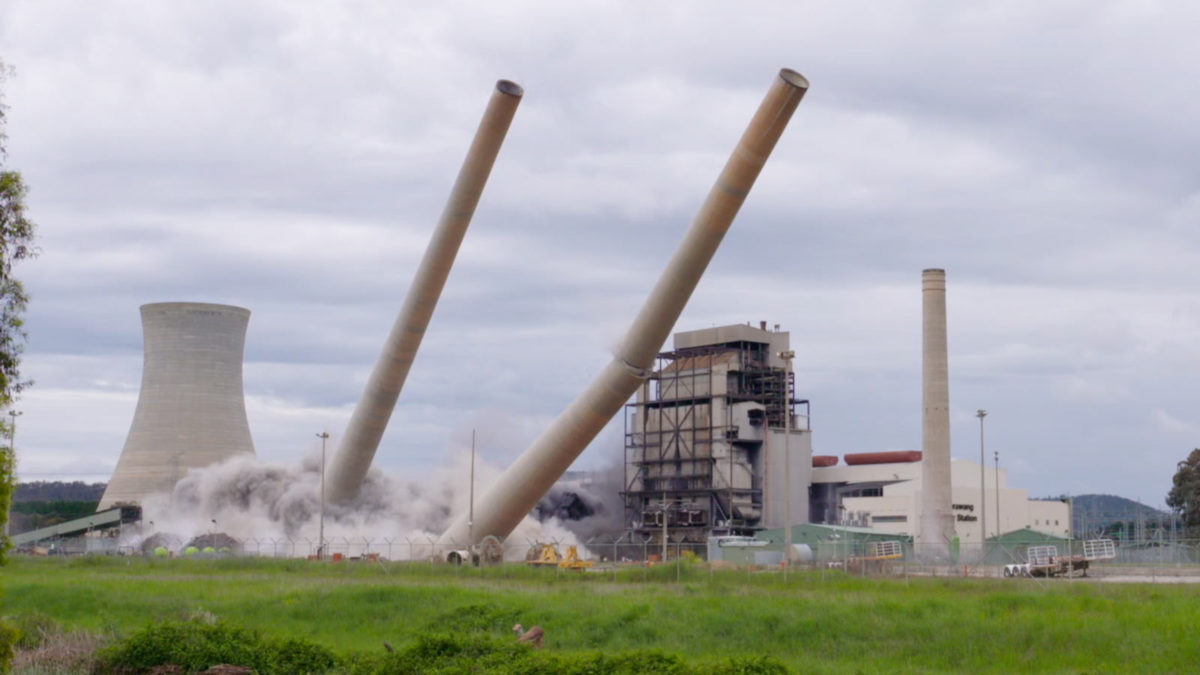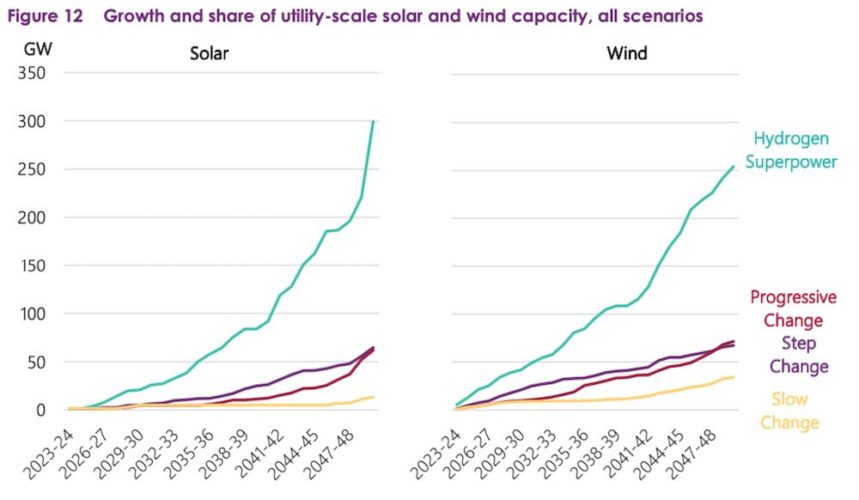The thrilling new scenario included in the Australian Energy Market Operator’s updated planning document is “Hydrogen Superpower”.
It is the first scenario produced by any energy market authority of what is required to meet the 1.5° Paris climate target, and it should surprise no-one that coal generation is the first and biggest victim.
Under this scenario, modelled in the draft version of the 2022 Integrated System Plan released on Friday, all the coal generators in Australia’s main grid will have closed within 10 years.
In its place will be vast amounts of large scale wind and solar, a trebling of rooftop solar PV installations, huge amounts of storage and new transmission links criss-crossing the countryside.
And the pace of growth will continue to accelerate over the coming decades. By 2050, a phenomenal 255GW of wind and 300GW of solar will be required to support the electrification of transport, households, and industry, and an anticipated boom in green hydrogen and green ammonia exports and consumption.
It is a wild prediction. In the exhaustive 18-months of consultations conducted by AEMO, nearly one in five of the energy experts consulted – as recently as November – thought this would be the most likely scenario.
Alex Wonhas, the head of system design who has shepherded the ISP through its various iterations, say it is entirely possible that Hydrogen Superpower becomes the most likely or “core scenario” in the next version of the ISP, in 2024, such is the pace of technology change, and the flow of capital.
It is certainly the expectation of so many global powerhouses, and particularly Australian billionaire Andrew Forrest. They are planning to spend tens and hundreds of billions on massive arrays of wind and solar that will supply hydrogen electrolysers that will displace mostly oil and gas.

This graph probably best sums up the difference between Hydrogen Superpower and the other scenarios modelled by AEMO – Slow change, Progressive Change and Step Change, which is now considered the most likely and will be the new central reference scenario.
Even by 2030 the pace of investment in new wind, solar and storage has vastly outstripped the other scenarios. By 2050, it has three times the capacity of the other scenarios. It is a transformation that even AEMO describes as “monumental”.
“Hydrogen Superpower nearly quadruples NEM energy consumption to support a hydrogen export industry,” the draft ISP says.
“The technology transforms transport and domestic manufacturing, and renewable energy exports become a significant Australian export, retaining Australia’s place as a global energy resource.
“As well, households with gas connections progressively switch to a hydrogen-gas blend, before appliance upgrades achieve 100% hydrogen use.” (Some may suggest that a lot of electrification of household appliances will also occur).
AEMO has also modelled another sensitivity, where Hydrogen Superpower becomes the likely scenario, but with not so much hydrogen demand. This sensitivity is based on policy shift to meet the 1.5°C target, and will rely on widespread electrification.
“This would confirm that the potential need for early transmission investments is set by the emission reduction objectives and the speed of coal closures, rather than by the electrolyser demand for electricity from hydrogen developments in the 2030s and 2040s in Hydrogen Superpower,” it writes.
“In this Strong Electrification sensitivity, without the benefit of hydrogen, the transmission investments would be needed to support faster and larger sclae VRE development and greater storage as coal retires earlier.
“Additional high quality renewables such as offshore wind may also be needed in the 2040s to support the larger energy consumption associated with the greater and faster electrification.”
See also: Energy Insiders Podcast: Say goodbye to coal
And: Brown coal likely to close by 2032, AEMO says, but all coal may be gone by then
Good, independent journalism takes time and money. But small independent media sites like RenewEconomy have been excluded from the millions of dollars being handed out to big media companies from the social media giants. To enable us to continue to hold governments and big business to account on climate and the renewable energy transition, and to help us highlight the extraordinary developments in technology and projects that are taking place, you can make a voluntary donation here to help ensure we can continue to offer the service free of charge and to as wide an audience as possible. Thank you for your support.











